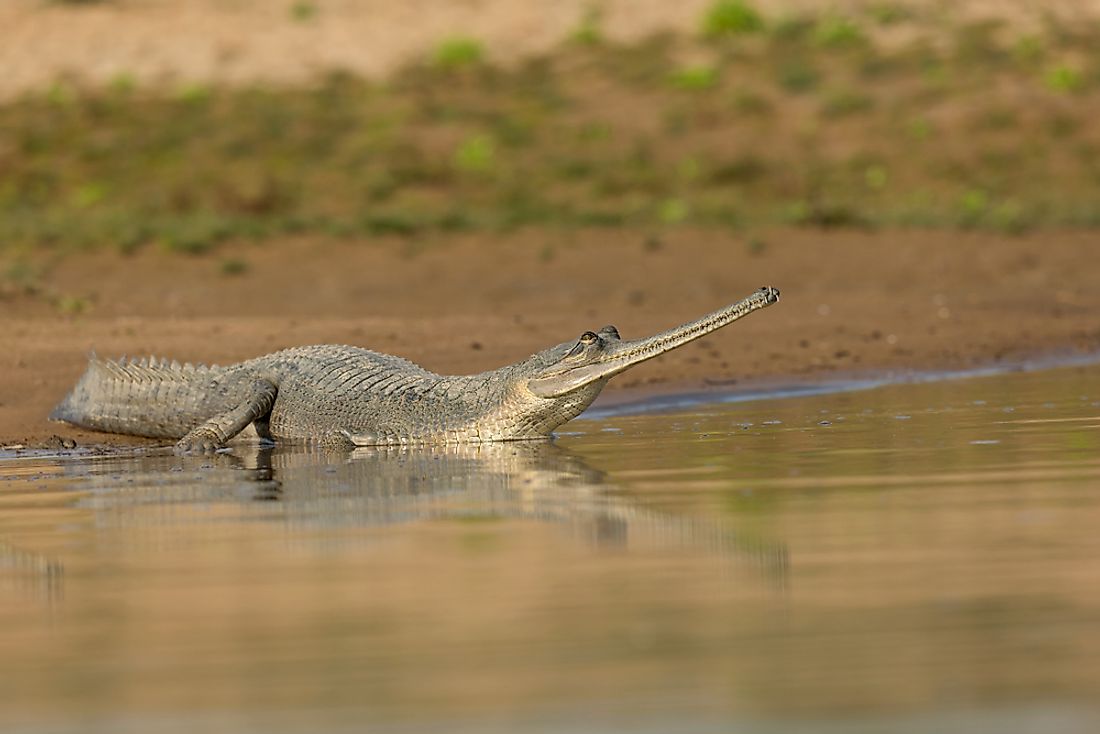Gharial Facts - Animals of Asia

Also known as the gavial, the gharial is a crocodilian belonging to the Gavialidae family and is native to India. Gharials are closely related caimans and alligators. The average gharial grows to lengths of between 11 and 15 feet, although some may reach lengths of 20.5 feet. Their average weight is 350 pounds with the largest gharial weighing 2,154 pounds. The gharial has a long and thin snout with a total of 110 teeth. The name gharial is derived from the unique nasal growth found at the end of the snout of males.
Habitat and Range
The gharial thrives naturally in the clam regions of deep and fast-moving rivers all along the Indian Subcontinent. Due to its short legs, most of its life is spent in water. Previously, they existed all the way from the Indus River in Pakistan to Irrawaddy River in Myanmar.
Currently, they are classified as a critically endangered species. Their present range is only about 2% of its previous range. Estimates from 2007 place their population between 200 and 300. Recent efforts have seen the population slowly increase in Nepal and India.
Behavior
The gharial is the most aquatic of the crocodilians that are alive today. The aquatic nature is brought along by their short legs which makes them unsuitable to live out of the water. On land, they can only slide along their bellies.
When they are out of the water, they bask in the sun in order to raise their temperature because they are cold-blooded. The gharial goes back into the water to cool down. Basking is done on the sandy exposed banks near a river because they are incapable of moving far on land. The gharial is a solitary creature despite basking together. Each one has a specific territory.
Diet
The gharial hunts individually with its primary food being fish. Although there have been cases of aggressiveness shown towards human beings, the gharial does not have a reputation for eating humans. The shape of the snout does not allow them to eat anything that is too big.
The gharial is carnivorous. Aside from fish, the gharial also eats insects and the occasional tiny animal including crustaceans. The young ones eat small fish, tadpoles, insects, and frogs. The gharial lies in wait for fish to come close and grab it in their jaws. Gharials do not chew but swallow the fish whole.
Reproduction
Males seek for mates by hissing and buzzing in their territories. Typically, dominant males get a harem of females in their territory. To show readiness for mating, females raise their snorts. Rubbing of snorts and mounting typically characterize mating.
The mating occurs during the months of December and January. Females lay the eggs in nests that are dug along the riverside. A female will lay between 20 and 95 eggs which hatch after an incubation period of between 71 and 93 days. Like in other crocodilian members, the sex of the hatchling is determined by the temperature. The eggs hatch around the month of July before the rains start.











